A brilliant day dawned and Etna was in a much better mood. Resplendent in the glory of the dazzling morning sunlight and beaming her huge icy cone, Mount Etna looked magnificent. From our hotel window it was a true delight to witness the enormity of the seething volcano which has been, and still is, such a dominant feature of the life and profile of Catania city.
We felt pretty magnificent too. It is amazing how different you can feel and how much better the world can look when the sun is shining and you are refreshed after a good night's rest.
After a very pleasant buffet breakfast and yet more indulgence in blood orange juice, we were ready to face the world. At this point, we vowed to look at juicing our own blood oranges when we returned home as we had not really taken much notice of our rather shabby looking crops. To our surprise and delight, our home grown Crowdy Head blood oranges proved to be nearly as good as the Sicilian variety. This was quite amazing as the setting of a good colour for the oranges is said to be determined by the number of low night time temperatures, the optimal being around freezing point - and temperatures never sink to freezing point at our coastal village of Crowdy Head.
Our trip for the day would take us across the Plain of Catania to historic Syracuse, a coastal city some 70 kilometers south of Catania.
Sicily is blessed with a warm temperate Mediterranean climate, virtually no winter season (Carmelo often referred to the "three seasons of Sicily"), abundant water supplies and large expanses of deep fertile soils. Given such rich natural agricultural resources and a location in the centre of the Mediterranean with immediate access to the European markets, it is no wonder that the food sector is one of the leading industries in the Sicilian economy.
The 418 square kilometer fertile Plain of Catania, comprising alluvial deposits of the Simeto, Dittaino and Gornalunga Rivers and the highly fertile volcanic soils around Mount Etna, is one of the most extensively farmed areas in Sicily. Huge acreages of citrus orchards (the area is famous for its blood oranges), olive groves and grape vines lined the road to Syracuse. Thriving horticultural crops included artichokes, tomatoes, broad beans, zucchinis, eggplants and melons.
Whilst most of the crops looked to be in fine condition, it was apparent that some of the farms had fallen into complete neglect. Carmelo lamented that many of the old rural properties had been abandoned due to fierce competition from the emerging northern African countries of Tunisia, Algeria and Morocco. It was a sad fact that the relatively high European linked wages of the Sicilian peoples meant that agricultural industries could not compete with those of the neighbouring African nations (to put this in perspective, the cost of a just a guide, with no transport or entry fees, for a half day tour in Sicily is around EUR 150 or AUS $214 ).
The area surrounding the city of Syracuse is one of the oldest settlements in Sicily. In fact, in its heyday, Syracuse was the largest city in the ancient Greek world and even larger than the cities of Athens and Corinth. Given its coastal position with a fine natural harbour, abundance of fresh water, available suitable stone for building purposes and extensive fertile soils, it is no wonder that Syracuse was an optimal location for early settlement.
Syracuse was founded by Greek Corinthian colonists who landed on the island of Ortygia in 734 BC and colonised the mainland four years later. The city flourished, paving way for a golden age during which education, art and culture thrived, and much public building took place. Intellectuals flocked to Syracuse and a sophisticated urban population witnessed the birth of comic Greek theatre. The great Greek philosopher, poet, lawyer and politician Cicero described Syracuse as "The greatest Greek city and most beautiful of them all". The city was home also to the genius mathematician and engineer Archimedes*.
In 211 BC the Romans invaded Syracuse, breaching the defences so ingeniously devised by Archimedes and taking control. The city became part of the Roman republic and Byzantine Empire. Sacked by the Saracens in 878 AD, the city fell into decline. For the next 800 years, famine, plague and earthquakes reduced the population drastically and Syracuse's rosy days were over for many years.
In 1693, the Val de Noti earthquake became a life line and catalyst for energetic urban renewal. A massive program of baroque style building reconstruction took place and the city began to thrive once again.
Following the unification of Sicily in 1865, Syracuse was made a provincial capital allowing the city to further expand, a trend which has continued to this day. Syracuse is now a UNESCO listed World Heritage site and a thriving international tourist destination.
We arrived in historic Syracuse city in the late morning. Our first port of call was the vast Archaeological Park of Neapolis which contains some of the the most famous archaeological sites of the area, including what is thought is could be the grave of Archimedes.
" A body floats in a fluid when the volume of the fluid displaced is equal to the weight of the body itself" - Archimedes' Principle.
As a young and pathetically non-academic child, my despairing father Neville tried to ram into my reluctant brain a number of mathematical formulae, perhaps in the remote hope that he could instill some semblance of intellect. Mostly his reasoning failed, but for some bizarre reason Archimedes Principle struck a chord with me and became my favourite mathematical formula. Even more amazing, is that whilst studying biological sciences - where I wrongly assumed I could avoid studying maths - I came to really enjoy the subject of physics.
Just prior to his death in early October this year, at the age of nearly 91 years and with memory issues commensurate with his advancing age, my father could still accurately recite Archimedes' Principle. Amazing!
I had no idea that one day I would visit Archimedes' birth and death place. Furthermore, I am ashamed to admit that I had no idea of the association with Syracuse until I began to write this travelogue entry. I would have certainly visited his grave had I known at the time of our visit. But then again, like a lot of ancient sites, it is widely disputed as to whether Archimedes is buried there or not.
THE ARCHAEOLOGICAL PARK OF NEOPOLIS
The Archaeological Park of Neopolis (New City) was established between 1952 and 1955. It comprises 240,000 square meters and houses the major ancient - and wonderfully named - monuments of the city including the Church of St Nicholas of the Rope Makers, the Roman Amphitheatre, the Altar of Heron II, the Greek Theatre, the Latomia (stone quarry) of Paradise with Dionysius Ear and the Rope Makers' Cave, the Latomia of the Intagliatella and of St Venera, the burial caves of the Necropoli Grotticelle and of course the so-called Archimedes Tomb.
Carmelo provided us with a thorough briefing on the history of the park and where and what we should visit, before leaving us to our own devices. This system worked well, giving us total freedom to wander at our leisure. After buying our tickets (EUR 10.00 per person**) and a guide booklet (Euro 3.00) at the ticket office on the corner of Via Cavallari and Viale Augusto, it was relatively easy to find our way around the park or to listen in on another English speaking tour if we wanted more information.
**It is well worth noting that admission to this park, and many other historic sites in Sicily is free for children 17 years and under, as well as European Union, Australian and Canadian citizens over the age of 65. Luckily our Carmelo had informed us prior to our entry to the park as this information is not very clearly marked at the ticketing office. Alan at least could take full advantage of his age, which he continued to remind me throughout our stay in Sicily....
The Altar of Heron II
Our first site visit was the remains of the Greek sacrificial Altar of Heron II, where it is recorded that up to 450 oxen were slaughtered at annual feasts in honour of the Greek god Zeus Eleutherius, the Liberator. Today only the 200 meter by 23 meter footings (apparently the longest altar ever built) remain of this rather gruesome monument. Apparently, the altar blocks and indeed much of the park's site buildings were removed in the 16th Century by the Spanish for the construction of the fortifications on the Syracuse island of Ortygia.
Sacrificial sites do not do much for either Alan or myself and we hurriedly moved on to the next historic monument, trusting it may impress us a bit more than the grisly altar.
The Latomie (Stone Quarries)
The limestone surrounds of Syracuse were pivotal to the successful establishment of the once great city of ancient Syracuse. Since the 5th Century BC, the latomie limestone has been used for the construction of temples and monuments, as well as providing secure natural prisons for the thousands of prisoners taken captive during the massive bloody battles of Himera in 480 BC and Porto Grand in 413 BC.
The most famous of the latomie is the Latomia del Paradiso (Garden of Paradise) with its extraordinarily ear-shaped cave known as the Orecchio di Dionisio or Dionysius Ear. The garden was so named because of its lush orange and olive groves, many of which still exist today. It's gruesome history however suggests that it would not have been named by the unfortunate prisoners.
The Dionysius Ear grotto was named by the famous Michelangelo of Caravaggio during his trip to Syracuse in 1608 not only because of its shape curiously resembles an ear canal but also because of its extraordinary acoustic ability to amplify sounds. According to popular legend, the tyrannical king Dionysius used the cave to eavesdrop from a hole in the top of the cave on his prisoners' conversations. The size of the grotto is huge - 23 meters in height by 65 meters deep and the peculiar shape is thought to be the result of excavation following a natural aqueduct. Although the Dionysius legend is more evocative, in reality the grotto is thought to have been used just as a rock quarry.
The cave exuded a sad and eerie atmosphere; voices rose in tone then gradually disappeared into the dark coldness of the massive grotto walls. The air was thick, musty and moist. Quarry or prison, it would not have been a pleasant place in which to be locked for any period of time.
Beyond the grotto lies the aptly named Rope Makers' Cave, which took its name from the artisans which for centuries and only up to a few decades ago, made handmade ropes for the city. Apparently, the site was ideal for rope making because of the cave's humid air. Today, it is in danger of collapse and closed to visitors, as are the Latomia of the Intagliatella and the Latomia of Santa Venera.
The Teatro Greco (Greek Theatre), Temenite Hill
Lonely Planet Guide states that from the Latomia it is just a "Quick hop to the lustrous white Teatro Greco". It may well have been just a hop but it took forever for a hot and bothered Alan and myself to find the correct pathway to the theatre through the so called Garden of Paradise.
Built in the 5th Century BC, the Teatro Greco is the biggest Greek theatre in Sicily and one of the largest in the world. The cavea (seating dedicated to the spectators) spans a diameter of some 140 meters and is sectioned by eight stairways into nine sectors with a corridor dividing the whole theatre in half. In the centre corridor are Greek inscriptions of 5th Century rulers Gelone II and Heron II and their wives, the Olympian Zeus and Heracles. Above the theatre are niches that once housed the statues of Greek heroes, underground Byzantine tombs and spectacular carved reliefs.
Architect Damokopos designed the Teatro following the natural morphology of the side of Temenite Hill to maximise its panoramic position above Syracuse's Porto Grande and the splendid Island of Ortygia. The theatre which in its hey day could seat up to a staggering 16,000 people, was the focal point of Syracuse's cultural, social and religious life, staging works of the three great tragedians of classical Athens - Sophocles, Euripides and Aeschylus. Epicharmus, father of Greek comedy also staged works at this world famous theatre.
Interestingly, today the Italian Institute of Ancient Drama still presents these classical plays at this site at the Festival of Plays held each year in May and June.
When the Romans took Syracuse in the 3rd Century BC, they made significant alterations to the theatre to accommodate gladiatorial combats and the staging of mock naval battles in an area which was flooded for the occasions. For over three centuries the theatre was used for these purposes. Eventually it was abandoned and used as a quarry by the Spaniards who used the stone for the fortifications of Ortygia.
In gazing at the decaying remains, I mused over the use of the once fine theatre as a vehicle of entertainment in having people publicly fight and kill each other, to say nothing of the absurdity of staging complex mock naval battles at a flooded inland theatre. I shuddered. Perhaps things had not changed that much over the centuries and perhaps it was just reassurance of my loathing of violent sports and modern movies.
The Roman Amphitheatre
Carmelo during our briefing had joked with us about the shapes of the ancient Greek and Roman amphitheatres. "The Romans learnt about the "shell shaped" theatres from the Greeks. They concluded that if a shell shape was a good idea, then two shells forming an ellipse shape would be twice as good!".
Wedged between the Greek Theatre and the Altar of Heron II lies the sad, silent and somewhat overgrown Roman amphitheatre. Built in the 2nd Century BC, it was used for the highly fashionable gladiator and wild beast fighting shows of Rome of the day.
The elliptical amphitheatre spans an impressive area of 140 by 90 meters and comprises two entrances to the north and south. At the centre of the arena is a large rectangular room which was originally covered to hide the stage machinery and is connected to the main southern entrance by a ditch. A crypt served as the exit point for the wretched gladiators and the unfortunate wild animals.
Frommers Guide provides a colourful description of the Roman Amphitheatre entertainment. "...Unlike the Greek Theatre with its classical plays, the Roman Amphitheatre tended toward a gutsier fare. Gladiators faced each other with tridents and daggers, and slaves were whipped into the centre of a battle to the death between wild beasts. If a man's opponent, man or beast didn't do him in, the crowd would often scream for the ringmaster to slit his throat...".
The park historical sites were well worth seeing but by the end of our visit to the park, we were weary of the blood thirsty practices of ancient times and made our way back to the ticketing office where we found good clean toilets and bought a well wanted drink.
It is worth noting that the toilets in Sicily are particularly clean, made all the more so by having paid cleaners on the spot. We considered a small fee to cover the cleaner costs well worthwhile. An American woman on a tour group associated with a cruise did not share our views however. Her screaming abuse of the undeserving cleaning staff was deafening and to us, both woeful and totally unfounded. Save us from tour groups!!
* Archimedes was an ancient Greek mathematician, physicist, engineer, inventor and astronomer and was an amazingly versatile genius of his time.
His mathematical prowess involved the development of number of geometrical theorems, including the derivation of "pi", used in the calculation of the area of a circle, the surface area and volume of a sphere and the area under a parabola.
He is credited also with being one of the first to apply the principles of mathematics to physical phenomena and hydrostatics (Archimedes Principle and the calculation of the volume of an irregularly shaped object) and the explanation of the lever.
His inventions included Archimedes Screw, a device used for pumping liquids - the same principle was later to be used extensively for pumping granulated solids such as coal and wheat - and also the Heat Ray used to create such intense heat from focusing sunlight through copper "mirrors" that it could be used to cause fire on enemy boats.
Archimedes died circa 212 BC during the second Punic Wars and the Siege of Syracuse. According to popular account, Archimedes was contemplating a mathematical diagram when a Roman soldier commanded him to meet with the Roman General Marcus Claudius Marcellus but he declined saying that he had to finish work on the problem. Enraged, the soldier killed him with his sword.
The probable moral to the story is never be too busy to meet with your boss.
Historic Neapolis OR "A Body Floats in a Fluid..."
Tuesday, May 06, 2014
 Syracuse, Sicily, Italy
Syracuse, Sicily, Italy
Other Entries
-
1Introduction - In Search of Macke's Donkey
May 015 days prior Crowdy Head, Australiaphoto_camera4videocam 0comment 0
Crowdy Head, Australiaphoto_camera4videocam 0comment 0 -
2A Pastel Morning - Our Journey Begins
May 024 days prior Sydney, Australiaphoto_camera13videocam 0comment 0
Sydney, Australiaphoto_camera13videocam 0comment 0 -
3Voyage Shanghai
May 033 days prior Shanghai, Chinaphoto_camera13videocam 0comment 0
Shanghai, Chinaphoto_camera13videocam 0comment 0 -
4A Close Connection or Catatonic in Catania
May 042 days prior Catania, Sicily, Maltaphoto_camera5videocam 0comment 0
Catania, Sicily, Maltaphoto_camera5videocam 0comment 0 -
5"Long Legged Italy Kicked Poor Sicily....."
May 042 days prior Catania, Italyphoto_camera6videocam 0comment 0
Catania, Italyphoto_camera6videocam 0comment 0 -
6Under the Spell of Mt Etna
May 051 day prior Catania, Italyphoto_camera31videocam 0comment 0
Catania, Italyphoto_camera31videocam 0comment 0 -
7Historic Neapolis OR "A Body Floats in a Fluid..."
May 06 Syracuse, Italyphoto_camera11videocam 0comment 0
Syracuse, Italyphoto_camera11videocam 0comment 0 -
8Idyllic Ortygia: Of Legends and Nymphs
May 06later that day Syracuse, Italyphoto_camera7videocam 0comment 0
Syracuse, Italyphoto_camera7videocam 0comment 0 -
9Images of Gorgeous Ortygia
May 071 day later Ortygia, Italyphoto_camera15videocam 0comment 0
Ortygia, Italyphoto_camera15videocam 0comment 0 -
10"And the Mountains Danced As If Drunk......"
May 071 day later Agrigento, Italyphoto_camera19videocam 0comment 0
Agrigento, Italyphoto_camera19videocam 0comment 0 -
11"Akragas - Most Beautiful City Mortals Ever Built"
May 082 days later Agrigento, Italyphoto_camera16videocam 0comment 0
Agrigento, Italyphoto_camera16videocam 0comment 0 -
12A Quaint Little B & B Called the Antichi Catoi
May 082 days later Agrigento, Italyphoto_camera8videocam 0comment 0
Agrigento, Italyphoto_camera8videocam 0comment 0 -
13Agrigento to Palermo - The Sicilian Way.......
May 093 days later Palermo, Italyphoto_camera8videocam 0comment 0
Palermo, Italyphoto_camera8videocam 0comment 0 -
14Photo Album of The Magnificent Grand Hotel Igiea
May 093 days later Palermo, Italyphoto_camera8videocam 0comment 0
Palermo, Italyphoto_camera8videocam 0comment 0 -
15Palermo: A Quilted History, A Fusion of Cultures
May 093 days later Palermo, Italyphoto_camera24videocam 0comment 0
Palermo, Italyphoto_camera24videocam 0comment 0 -
16Treasures of the Conca D'Oro: Monreale & Cefalu
May 093 days later Palermo, Italyphoto_camera16videocam 0comment 0
Palermo, Italyphoto_camera16videocam 0comment 0 -
17Farewell Sicily OR A Shaky Flight to Tunisia.
May 104 days later Tunis, Tunisiaphoto_camera5videocam 0comment 0
Tunis, Tunisiaphoto_camera5videocam 0comment 0 -
18Tunisia Profile: Phoenicians to the Arab Spring
May 115 days later Tunis, Tunisiaphoto_camera5videocam 0comment 0
Tunis, Tunisiaphoto_camera5videocam 0comment 0 -
19Tunis: A City of Brilliant White & Cobalt Blue
May 115 days later Tunis, Tunisiaphoto_camera21videocam 0comment 0
Tunis, Tunisiaphoto_camera21videocam 0comment 0 -
20Toward the Algerian Border: Destination Le Kef
May 126 days later Tunis, Tunisiaphoto_camera48videocam 0comment 0
Tunis, Tunisiaphoto_camera48videocam 0comment 0 -
21Tunis: Medinas, Mosques, Cafes & Razor Wire
May 137 days later Tunis, Tunisiaphoto_camera10videocam 0comment 0
Tunis, Tunisiaphoto_camera10videocam 0comment 0 -
22"If You Love Ladakh, You Will Just ADORE Morocco!"
May 148 days later Casablanca, Moroccophoto_camera18videocam 0comment 0
Casablanca, Moroccophoto_camera18videocam 0comment 0 -
23Morocco Profile: Ancient Berbers - The Arab Spring
May 159 days later Fes, Moroccophoto_camera4videocam 0comment 0
Fes, Moroccophoto_camera4videocam 0comment 0 -
24Meknes & Volubilis: The Beautiful People Go to Fes
May 159 days later Fes, Moroccophoto_camera25videocam 0comment 0
Fes, Moroccophoto_camera25videocam 0comment 0 -
25Fes: At Last Macke's Medina and the Elusive Donkey
May 1610 days later Fes, Moroccophoto_camera29videocam 0comment 0
Fes, Moroccophoto_camera29videocam 0comment 0

 Syracuse, Sicily, Italy
Syracuse, Sicily, Italy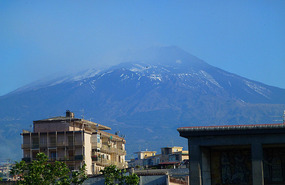

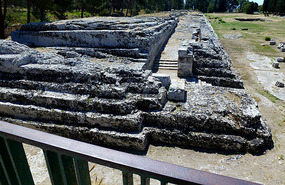
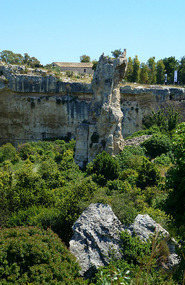
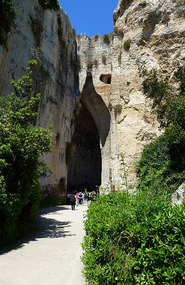
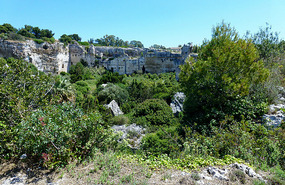
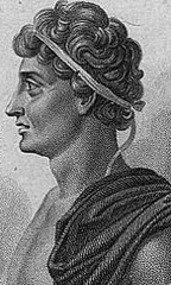
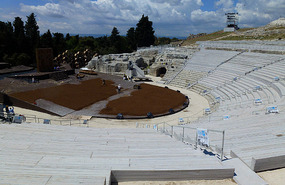
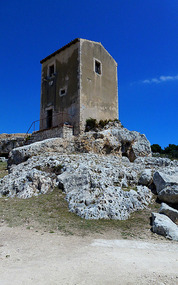

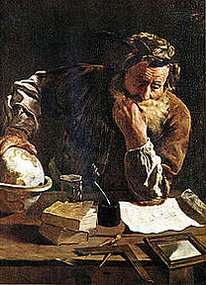






2025-05-22